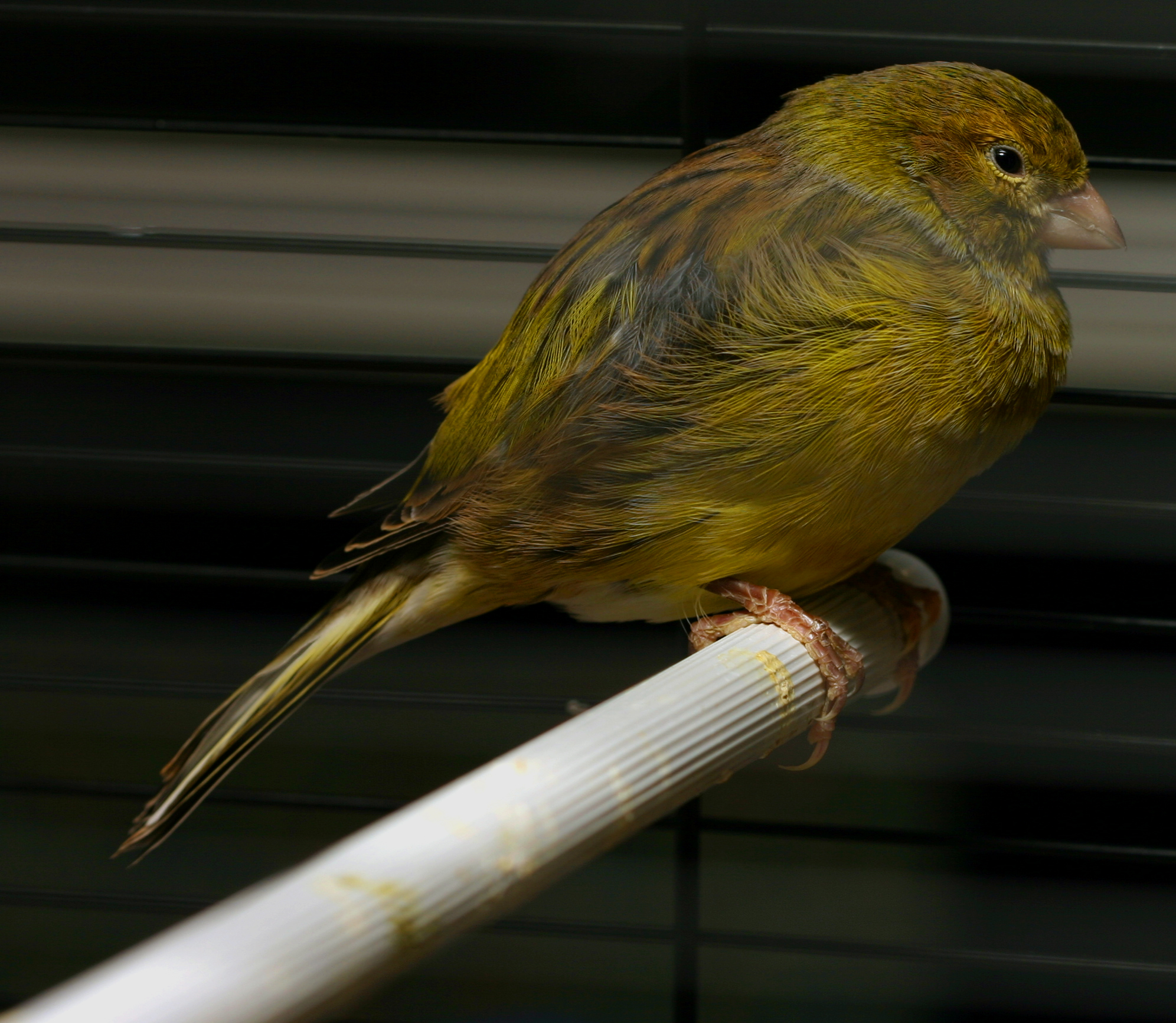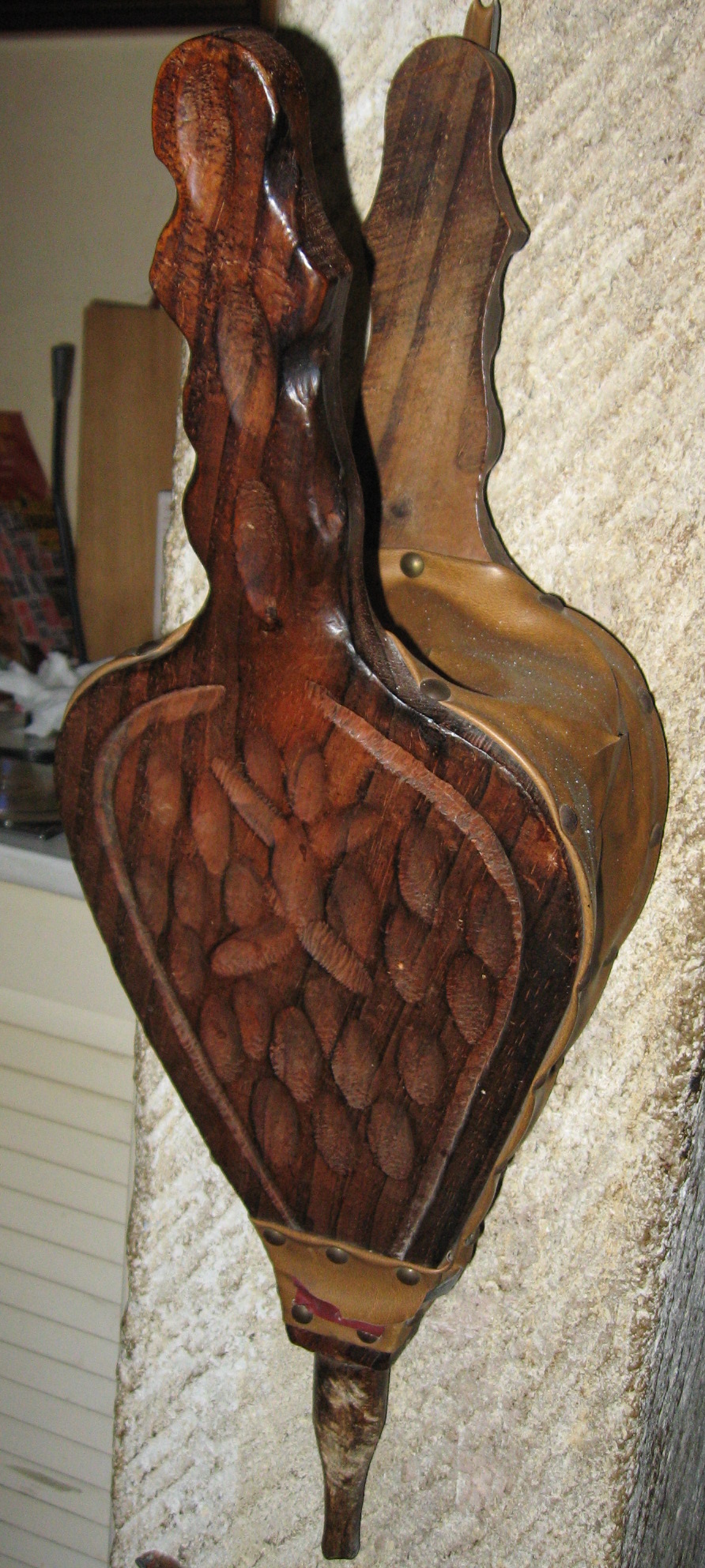|
Serinette
A serinette is a type of musical instrument consisting of a small hand-cranked, pneumatic barrel organ. It appeared in the first half of the 18th century in eastern France, and was used to teach tunes to canaries. Its name is derived from the French ''serin'', meaning “canary.” Serinettes are housed in a wooden case, normally of walnut, and typically measuring × × . The instrument is played by turning a crank mounted on the front. The crank pumps a bellows to supply air to the pipes, and also turns a wooden barrel by means of gears. Driven into the barrel are brass pins and staples which encode the pieces of music. Mounted over the barrel is a bar carrying wooden keys connected to valves by vertical wooden rods. As the barrel turns, the pins and staples lift the keys, in turn opening the valves to let air into the pipes, which are located at the rear of the instrument. Different tunes are selected by lifting the bar carrying the keys, then shifting the barrel along its le ... [...More Info...] [...Related Items...] OR: [Wikipedia] [Google] [Baidu] |
Musical Instrument
A musical instrument is a device created or adapted to make Music, musical sounds. In principle, any object that produces sound can be considered a musical instrument—it is through purpose that the object becomes a musical instrument. A person who plays a musical instrument is known as an ''#Instrumentalist, instrumentalist''. The history of musical instruments dates to the beginnings of human culture. Early musical instruments may have been used for rituals, such as a horn (music), horn to signal success on the hunt, or a drum in a religious ceremony. Cultures eventually developed composition and performance of melody, melodies for entertainment. Musical instruments evolved in step with changing applications and technologies. The exact date and specific origin of the first device considered a musical instrument, is widely disputed. The oldest object identified by scholars as a musical instrument, is Divje Babe flute, a simple flute, dated back 50,000–60,000 years. Many scho ... [...More Info...] [...Related Items...] OR: [Wikipedia] [Google] [Baidu] |
Barrel Organ
A barrel organ (also called roller organ or crank organ) is a France, French mechanical musical instrument consisting of bellows and one or more ranks of organ pipe, pipes housed in a case, usually of wood, and often highly decorated. The basic principle is the same as a traditional Organ (music), pipe organ, but rather than being played by an organist, the barrel organ is activated either by a person turning a crank, or by clockwork driven by weights or springs. The pieces of music are encoded onto wooden barrels (or cylinders), which are analogy, analogous to the Musical keyboard, keyboard of the traditional pipe organ. A person (or in some cases, a trained animal) who plays a barrel organ is known as an Street organ, organ grinder. Terminology There are many names for the barrel organ, such as hand organ, cylinder organ, box organ (though that can also mean a positive organ), street organ, grinder organ, and Low Countries organ. In French names include ''orgue à manivelle' ... [...More Info...] [...Related Items...] OR: [Wikipedia] [Google] [Baidu] |
France
France, officially the French Republic, is a country located primarily in Western Europe. Overseas France, Its overseas regions and territories include French Guiana in South America, Saint Pierre and Miquelon in the Atlantic Ocean#North Atlantic, North Atlantic, the French West Indies, and List of islands of France, many islands in Oceania and the Indian Ocean, giving it Exclusive economic zone of France, one of the largest discontiguous exclusive economic zones in the world. Metropolitan France shares borders with Belgium and Luxembourg to the north; Germany to the northeast; Switzerland to the east; Italy and Monaco to the southeast; Andorra and Spain to the south; and a maritime border with the United Kingdom to the northwest. Its metropolitan area extends from the Rhine to the Atlantic Ocean and from the Mediterranean Sea to the English Channel and the North Sea. Its Regions of France, eighteen integral regions—five of which are overseas—span a combined area of and hav ... [...More Info...] [...Related Items...] OR: [Wikipedia] [Google] [Baidu] |
Domestic Canary
The domestic canary (''Serinus canaria'' forma ''domestica''), often simply known as the canary, is a domesticated form of the wild canary, a small songbird in the finch family originating in the Macaronesian Islands. Over the past 500 years of captivity, a wide variety of coloured, decorative and singing canaries have been bred through selection. The canary has been kept as a pet for centuries, which began after the European conquests of the islands inhabited by its wild ancestor. They were domesticated and became prized possessions in 17th century Europe, eventually becoming popular even amongst poorer households, largely due to its melodious song and flexibility in breeding. They were also a highly popular pet in the United States from the 19th century until the mid 20th century. Canaries have also been used in the coal mining industry to detect carbon monoxide, a practice that has since been ceased. Domestic canaries come in a wide variety of different plumage colours, un ... [...More Info...] [...Related Items...] OR: [Wikipedia] [Google] [Baidu] |
Walnut
A walnut is the edible seed of any tree of the genus '' Juglans'' (family Juglandaceae), particularly the Persian or English walnut, '' Juglans regia''. They are accessory fruit because the outer covering of the fruit is technically an involucre and thus not morphologically part of the carpel; this means it cannot be a drupe but is instead a drupe-like nut. After full ripening, the shell is discarded, and the kernel is eaten. Nuts of the eastern black walnut ('' Juglans nigra'') and butternuts ('' Juglans cinerea'') are less commonly consumed. Description Walnuts are the round, single-seed stone fruits of the walnut tree. They ripen between September and November in the northern hemisphere. The brown, wrinkly walnut shell is enclosed in a husk. Shells of walnuts available in commerce usually have two segments (but three or four-segment shells can also form). During the bumming process, the husk becomes brittle and the shell hard. The shell encloses the kernel or meat ... [...More Info...] [...Related Items...] OR: [Wikipedia] [Google] [Baidu] |
Bellows
A bellows or pair of bellows is a device constructed to furnish a strong blast of air. The simplest type consists of a flexible bag comprising a pair of rigid boards with handles joined by flexible leather sides enclosing an approximately airtight cavity which can be expanded and contracted by operating the handles, and fitted with a valve allowing air to fill the cavity when expanded, and with a tube through which the air is forced out in a stream when the cavity is compressed. It has many applications, in particular blowing on a fire to supply it with air. The term "bellows" is used by extension for a flexible bag whose volume can be changed by compression or expansion, but not used to deliver air. For example, the light-tight (but not airtight) bag allowing the distance between the lens and film of a folding photographic camera to be varied is called a bellows. Etymology "Bellows" is only used in plural. The Old English name for "bellows" was , 'blast-bag', 'blowing-ba ... [...More Info...] [...Related Items...] OR: [Wikipedia] [Google] [Baidu] |
Organ Pipe
An organ pipe is a sound-producing element of the pipe organ that resonator, resonates at a specific Pitch (music), pitch when pressurized air (commonly referred to as ''wind'') is driven through it. Each pipe is tuned to a note of the musical scale. A set of organ pipes of similar timbre comprising the complete scale is known as a rank; one or more ranks constitutes a Organ stop, stop. Construction Materials Organ pipes are generally made out of either metal or wood. Very rarely, glass, porcelain, plastic, paper, Papier-mâché, or even Rock (geology), stone pipes may be seen. A Las Piñas Bamboo Organ, historical organ in the Philippines has pipes made exclusively of bamboo. Metal Metal pipes are usually made of lead; for increased rigidity it is alloyed with tin along with trace amounts of antimony and copper. The percentage of each metal in the alloy influences the characteristics of the resulting pipe. A high proportion of tin results in a slightly brighter colour (optica ... [...More Info...] [...Related Items...] OR: [Wikipedia] [Google] [Baidu] |
Ornament (music)
In music, ornaments or embellishments are musical flourishes—typically, added notes—that are not essential to carry the overall line of the melody (or harmony), but serve instead to decorate or "ornament" that line (or harmony), provide added interest and variety, and give the performer the opportunity to add expressiveness to a song or piece. Many ornaments are performed as "fast notes" around a central, main note. There are many types of ornaments, ranging from the addition of a single, short grace note before a main note to the performance of a virtuosic and flamboyant trill. The amount of ornamentation in a piece of music can vary from quite extensive (it was often extensive in the Baroque period, from 1600 to 1750) to relatively little or even none. The word ''agrément'' is used specifically to indicate the French Baroque style of ornamentation. Improvised vs. written In the Baroque period, it was common for performers to improvise ornamentation on a given melo ... [...More Info...] [...Related Items...] OR: [Wikipedia] [Google] [Baidu] |
Mirecourt
Mirecourt () is a Communes of France, commune in the Vosges (French department), Vosges Departments of France, department in Grand Est in northeastern France. Mirecourt is known for lace-making and the manufacture of musical instruments, particularly those of the violin family. Geography Mirecourt is the administrative capital of a Canton of Mirecourt, canton positioned in the Xantois district at the heart of the Vosges plain, at the confluence of the Madon, River Madon with the Arol Valley. Most of the town is laid out on the west side of the Madon on a succession of levels. Visitors are attracted by the richness of the town's architecture and by the natural advantages of the site. Mirecourt is also at the heart of a road crossing, from Vittel, from Épinal to the east by southeast, from Neufchâteau, Vosges, Neufchâteau and from Nancy, France, Nancy. For much of the twentieth century Mirecourt was a staging post on the :fr:Route nationale 66, RN66, a major road towards Pari ... [...More Info...] [...Related Items...] OR: [Wikipedia] [Google] [Baidu] |
Lorraine (région)
Lorraine, also , ; ; Lorrain: ''Louréne''; Lorraine Franconian: ''Lottringe''; ; ; is a cultural and historical region in Eastern France, now located in the administrative region of Grand Est. Its name stems from the medieval kingdom of Lotharingia (855–959 AD), which in turn was named after either Emperor Lothair I or King Lothair II. Lorraine, originally the southern or "upper" part of this kingdom, came to be ruled by the Holy Roman Empire as the Duchy of Lorraine before the Kingdom of France annexed it in 1766. From 1982 until January 2016, Lorraine was an administrative region of France. In 2016, under a reorganisation, it became part of the new region Grand Est. As a region in modern France, Lorraine consisted of the four departments Meurthe-et-Moselle, Meuse, Moselle and Vosges (from a historical point of view the Haute-Marne department is also located in the region), containing 2,337 communes. Metz is the regional prefecture. The largest metropolitan area of Lorra ... [...More Info...] [...Related Items...] OR: [Wikipedia] [Google] [Baidu] |







